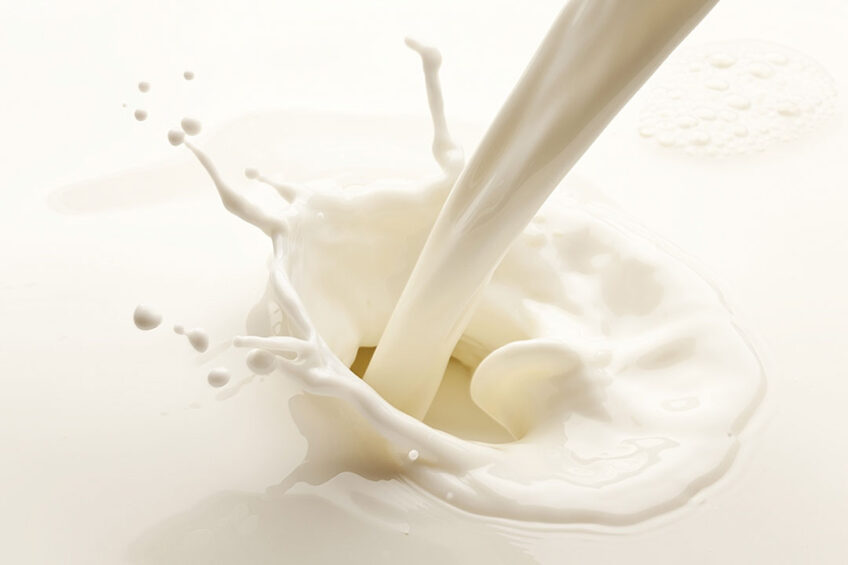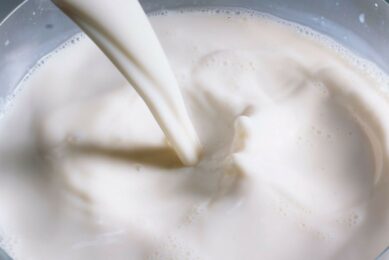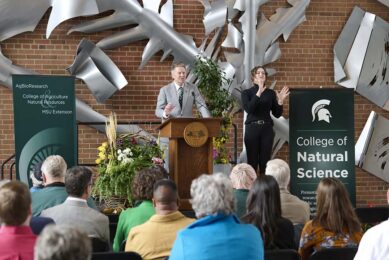Enzymes to improve long-life lactose-free dairy milk

The demand for long-life milk is growing, however, long-life lactose-free milk is exposed to challenges in relation to shelf-life, stability and quality, including taste and appearance, when stored unrefrigerated. Researchers from Aarhus University in Denmark are studying the effect of enzymes added to lactose-free UHT milk, and if these can be improved.
The lactase enzyme helps infants break down the natural lactose present in breast milk into glucose and galactose, which may be absorbed by the intestine. According to Aarhus University, this enzyme remains present and active in our small intestine for many people, but major parts of the population experience lactose-intolerance when the gene that keeps the enzyme active is “turned off”. This enzyme is therefore added to ultra-high-temperature (UHT) milk to break down the lactose so that those who suffer from lactose intolerance can enjoy milk.

The Maillard reaction
For industrial applications, the lactase enzyme, which is concentrated from a fermentation process, may contain additional undesirable microbial enzyme activities that can damage protein structures. Furthermore, the glucose and galactose resulting from the lactase treatment may react with the milk proteins during heating – known as the Maillard reaction – and can cause browning of the milk.
The undesirable breakdown process may result in disadvantages as to sensory perception and shelf-life, meaning that UHT milk with added lactase has a shorter shelf-life than UHT milk without added lactase. Within the framework of the project, the researchers will investigate shelf-life, quality changes and underlying mechanisms in lactose-free UHT milk produced by adding different lactase enzymes in a realistic production process.
Also read: Making milk ‘cool’ again
Shelf-life and freshness
Dr Peter J.T. Dekker, biochemist and senior researcher in the DSM Biotechnology Centre in Delft, the Netherlands, a company that will cooperate with the researchers, explains: “This new PhD project will explore the changes in physical properties and chemical composition of lactose-free UHT milk, which relate to shelf-life and freshness, after storage of these products at various conditions.”
During this project, the team will add the enzymes either prior to or after heating in order to test at which point it is most appropriate. Samples will then be stored at different temperatures, 25 and 35 degrees, respectively, for a period of up to 1 year. This takes into account that UHT milk is often not refrigerated. The shelf-life of lactose-free milk is about 6 months, which is considerably shorter than the shelf-life of ordinary UHT milk, which is approximately 1 year.
Also read: Next big thing: Dairy products with vitamins
Product changes
The researchers will subsequently characterise the product changes that take place, including coagulation of proteins which may cause sedimentation, just as they will learn more about interacting conditions in order to achieve a complete picture of quality changes and the reasons for these. Project efforts further include the use of new enzymes as well as improved purification of the enzymes added. Specific focus is given to a new enzyme with a high activity, which will break down lactose faster than the enzymes used so far.
Project partners also comprise researchers from the iNANO Centre, Aarhus University, who study protein stability. Professor and project manager Lotte Bach Larsen, Department of Food Science, Aarhus University, said: “Generally, what we do is to develop and apply a toolbox consisting of very advanced protein-chemical methods, including proteomics and mass spectrometry to characterise protein breakdown and molecular changes in milk protein during storage. This means that we try to elucidate the underlying food-chemical compositions, and the interaction that may exist between the processes, and how these factors can influence protein modifications, aggregate and bitter peptide formation, colour changes and sedimentation in the final product.”
Join 13,000+ subscribers
Subscribe to our newsletter to stay updated about all the need-to-know content in the dairy sector, two times a week.










